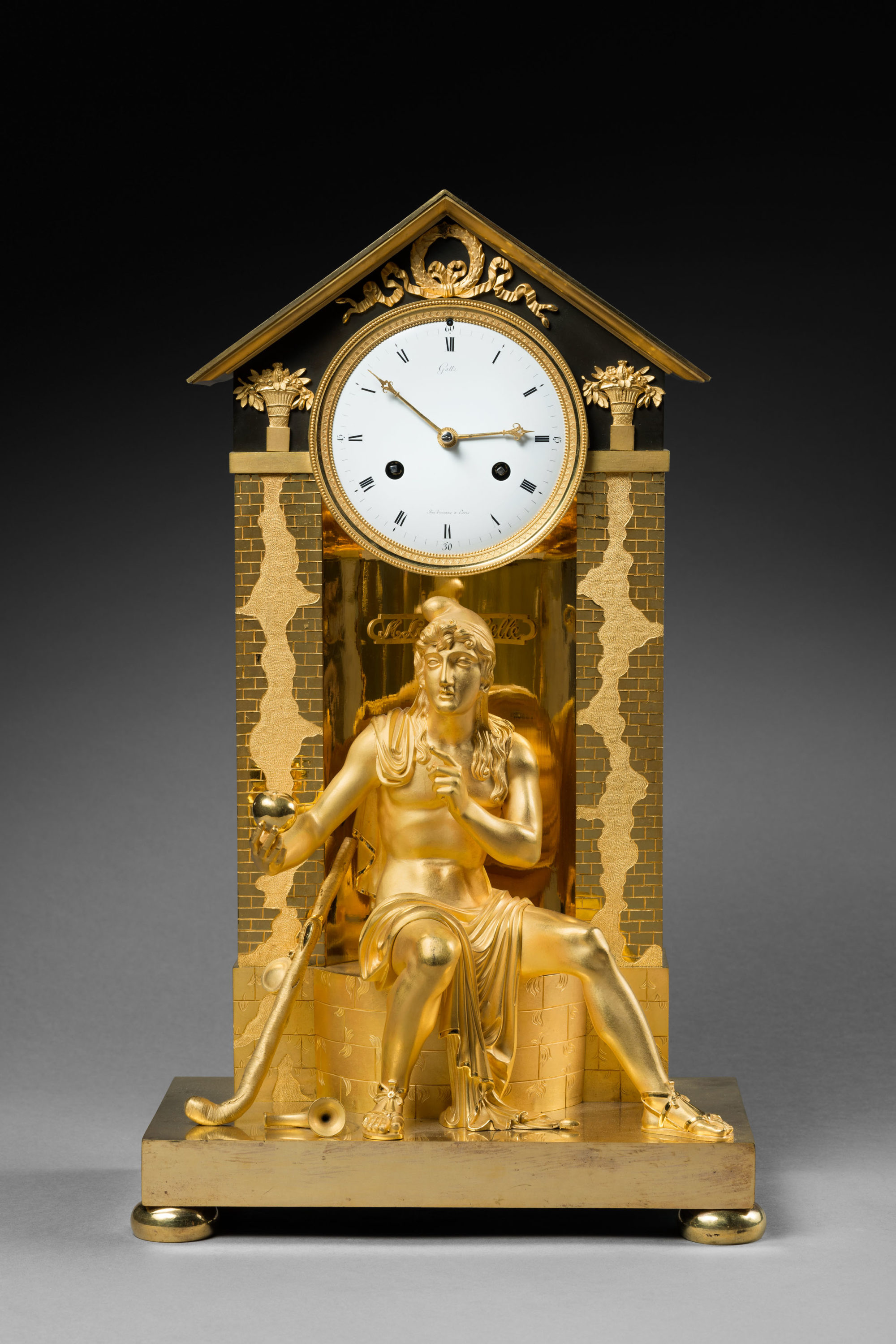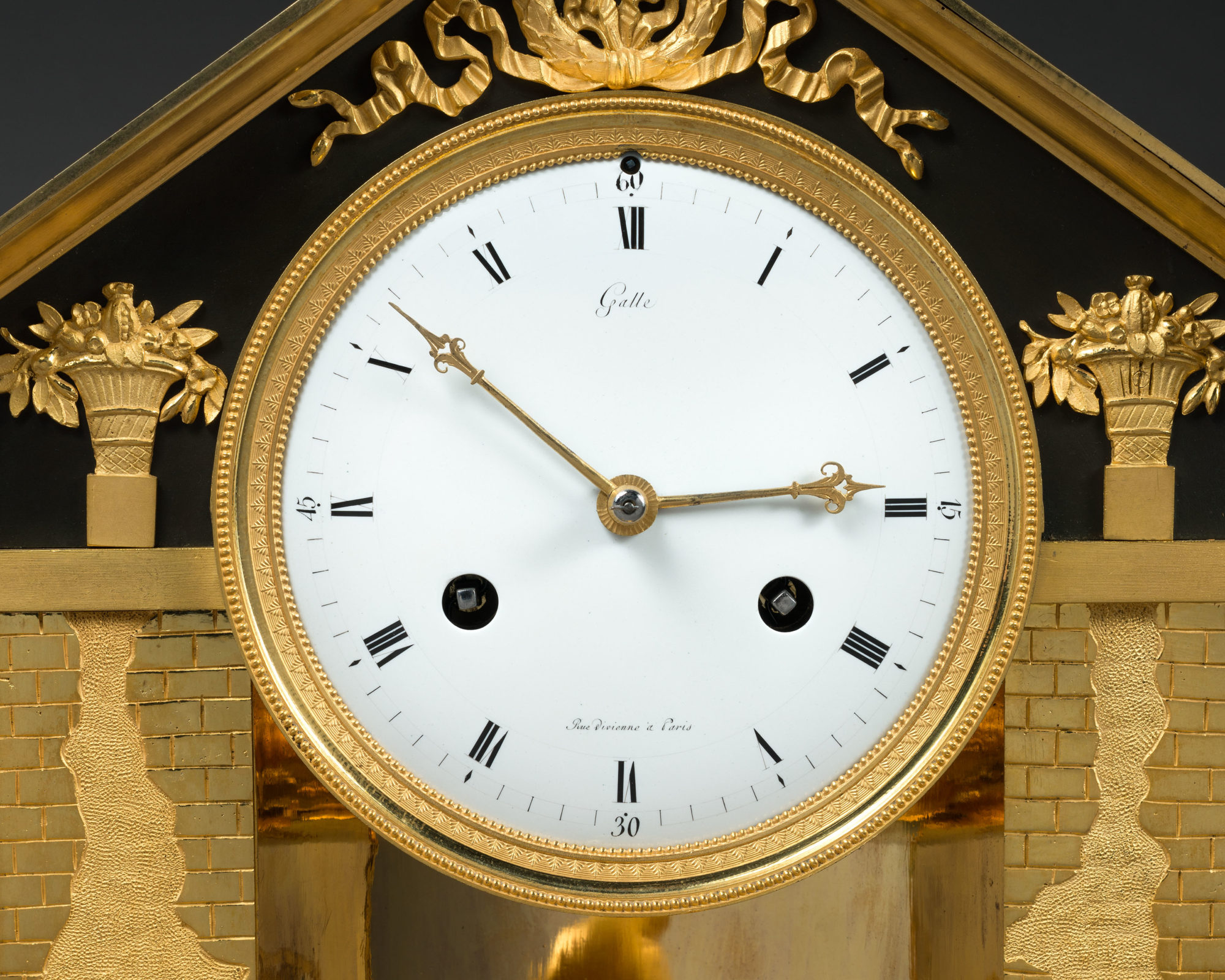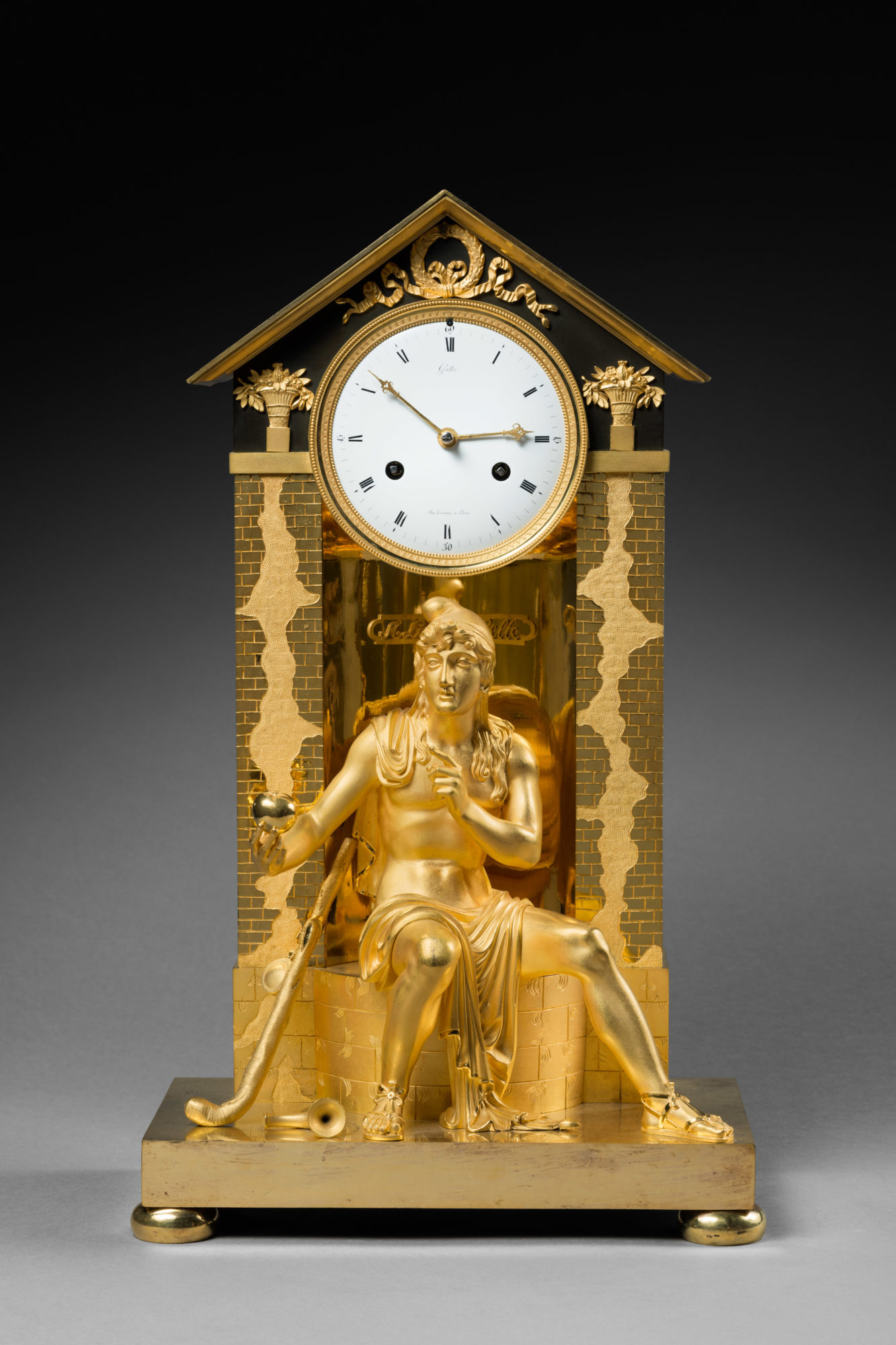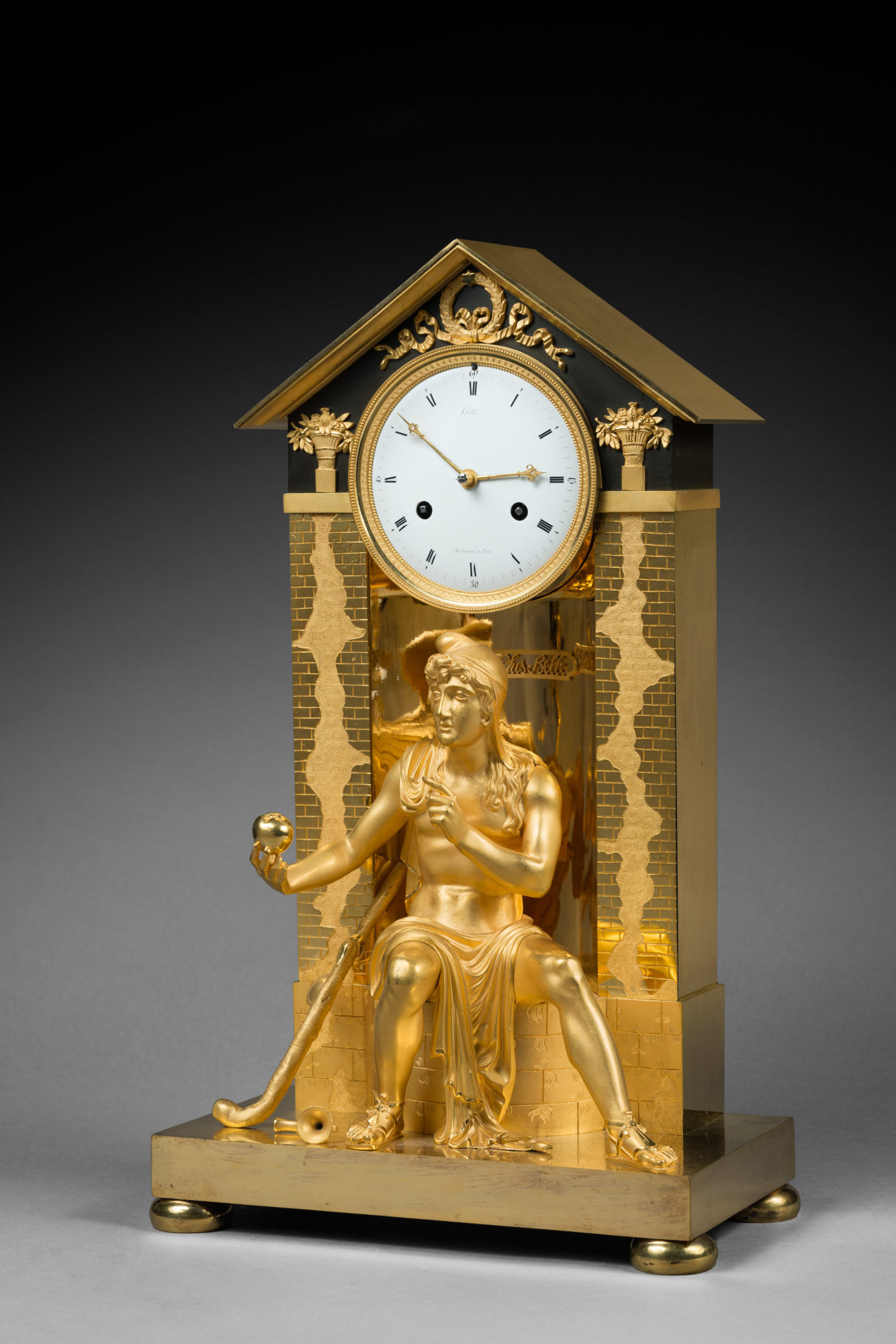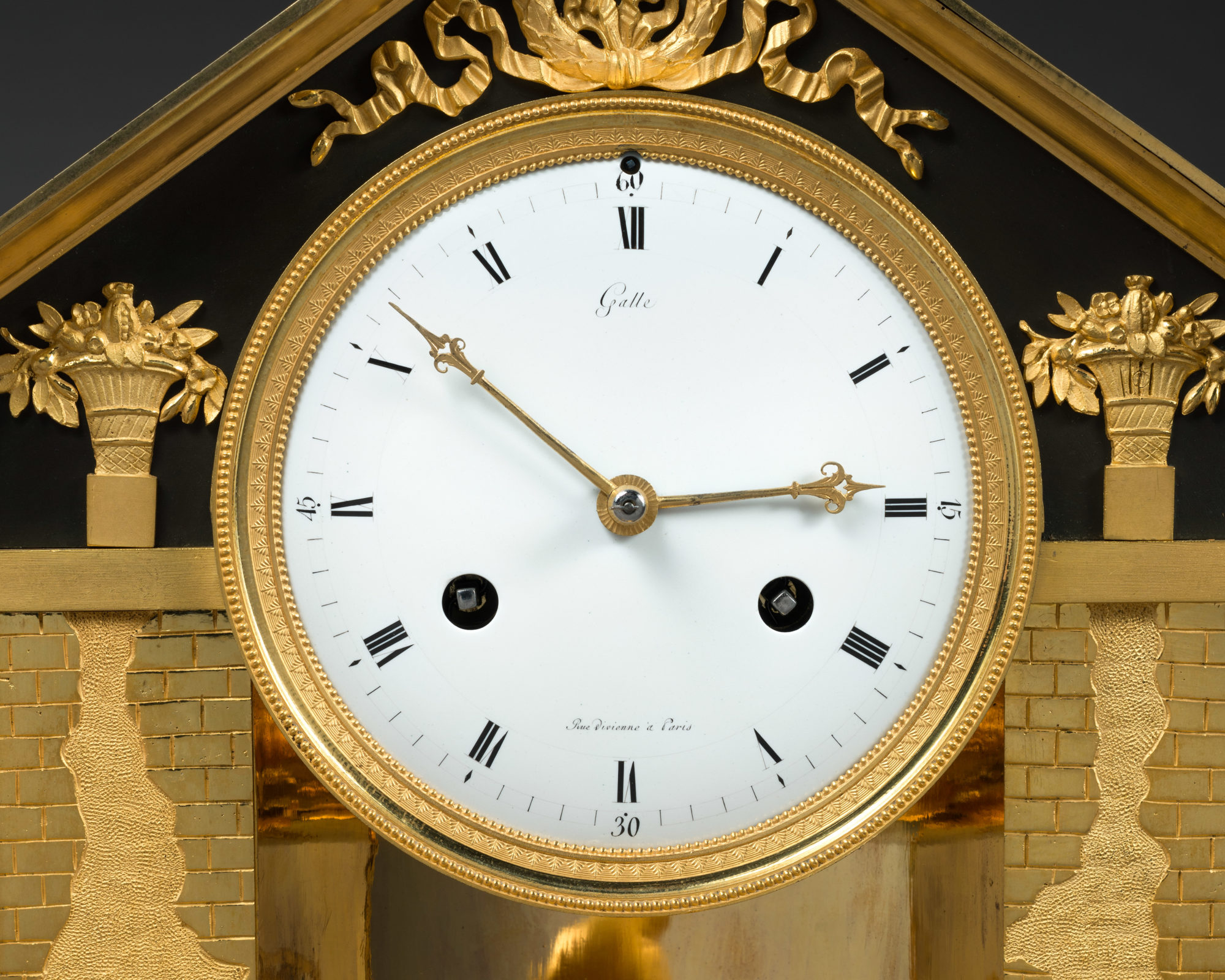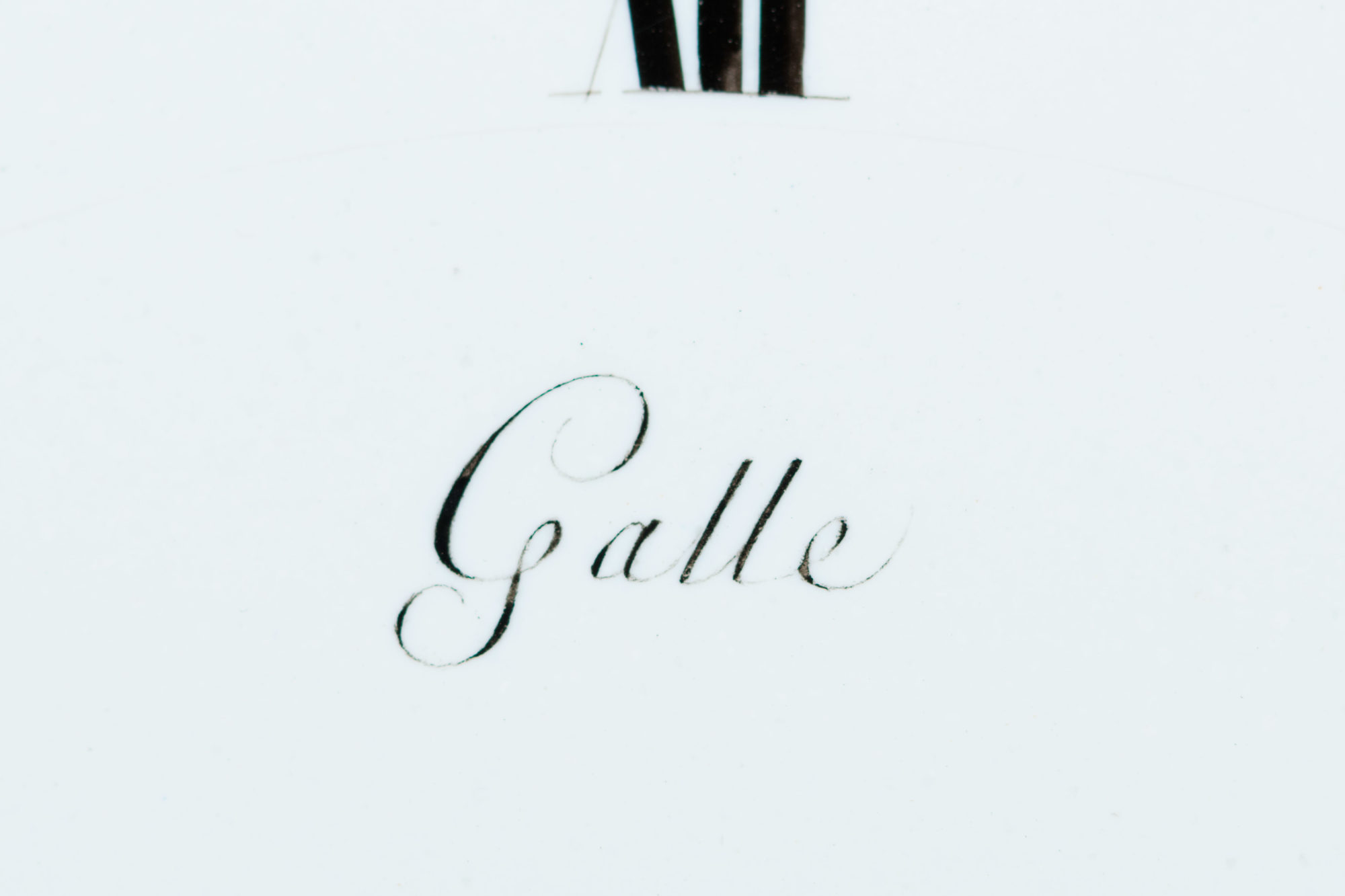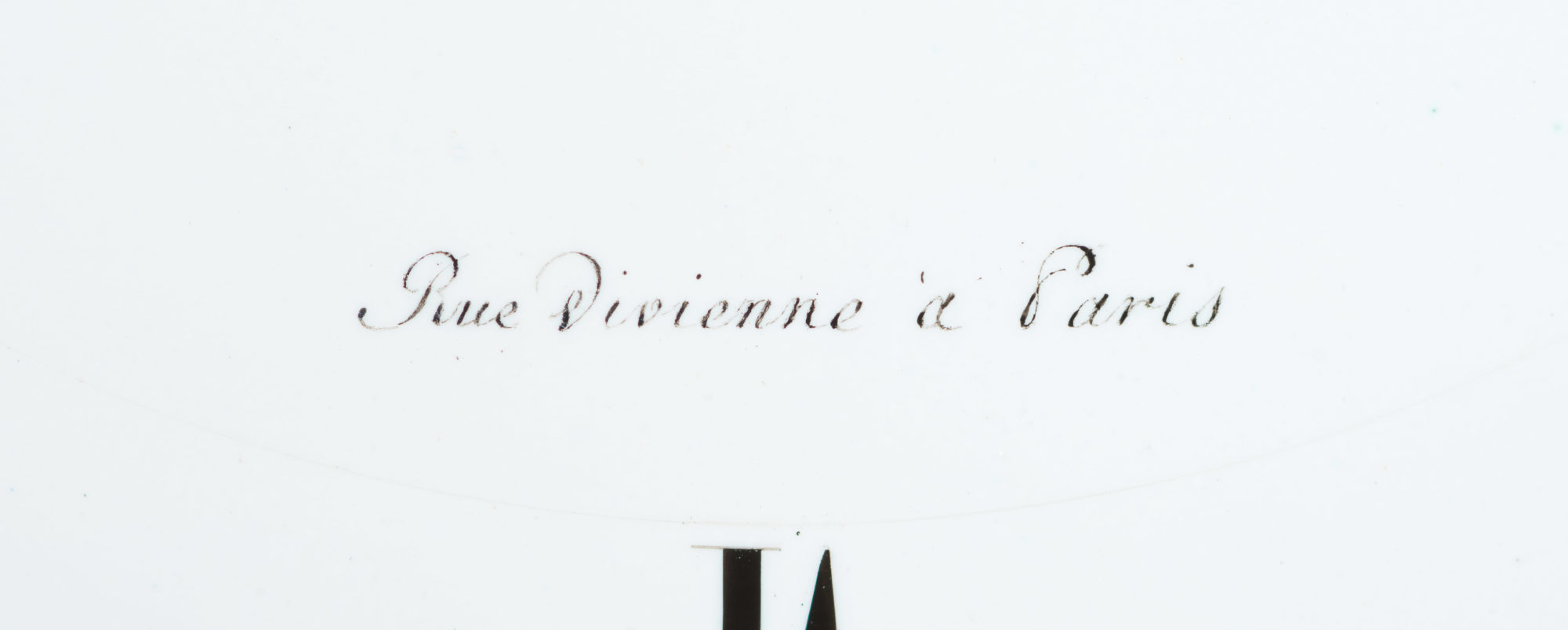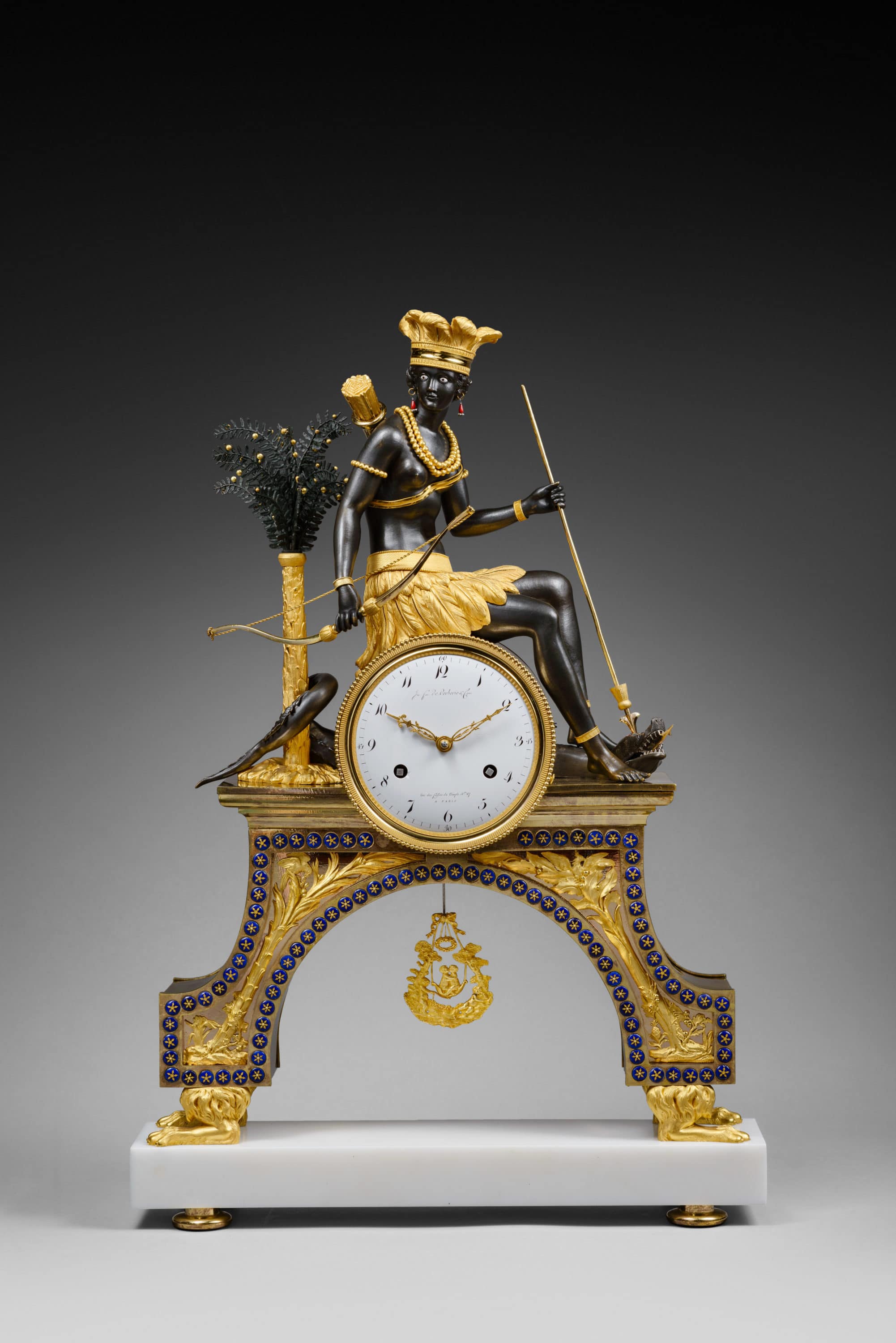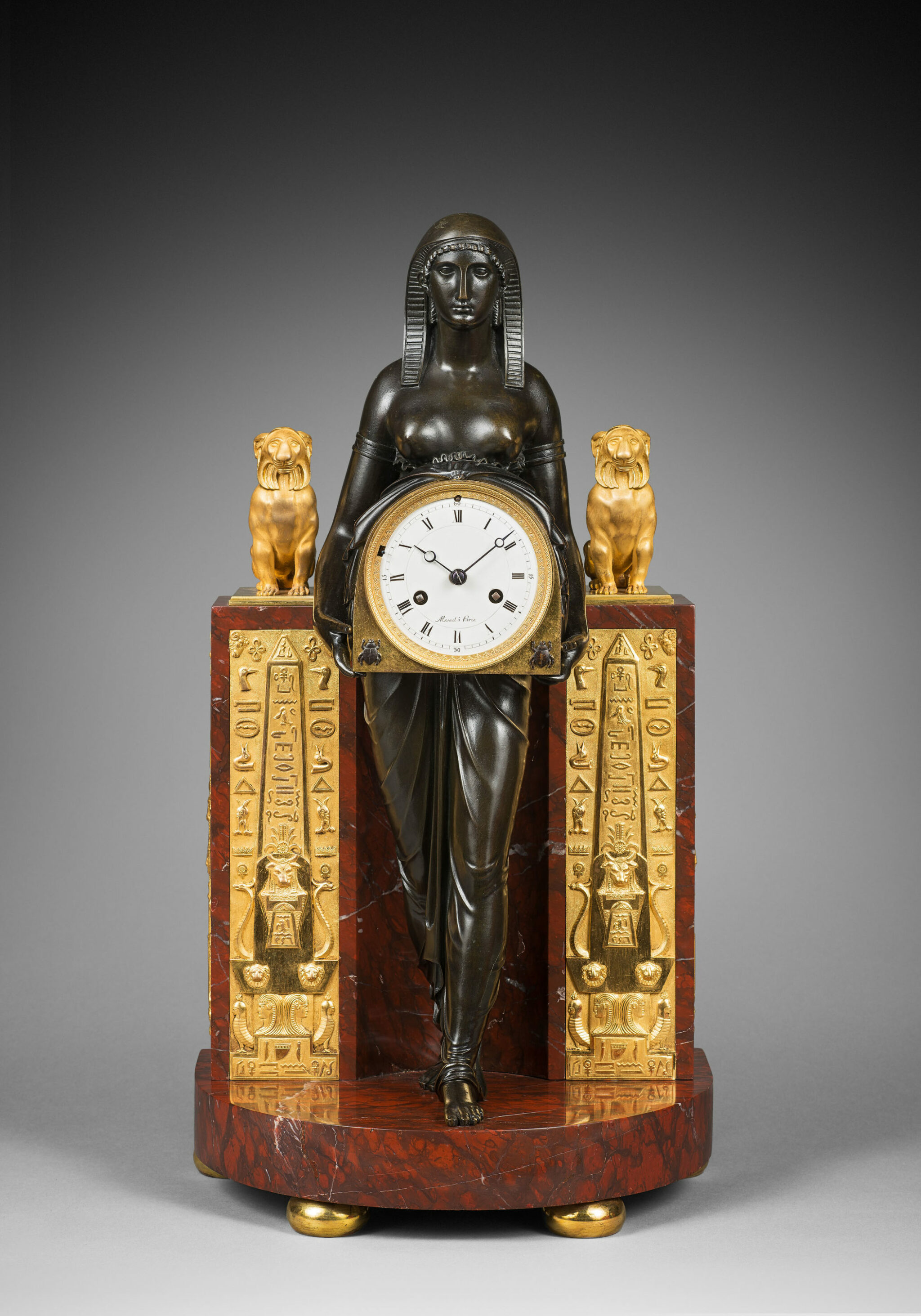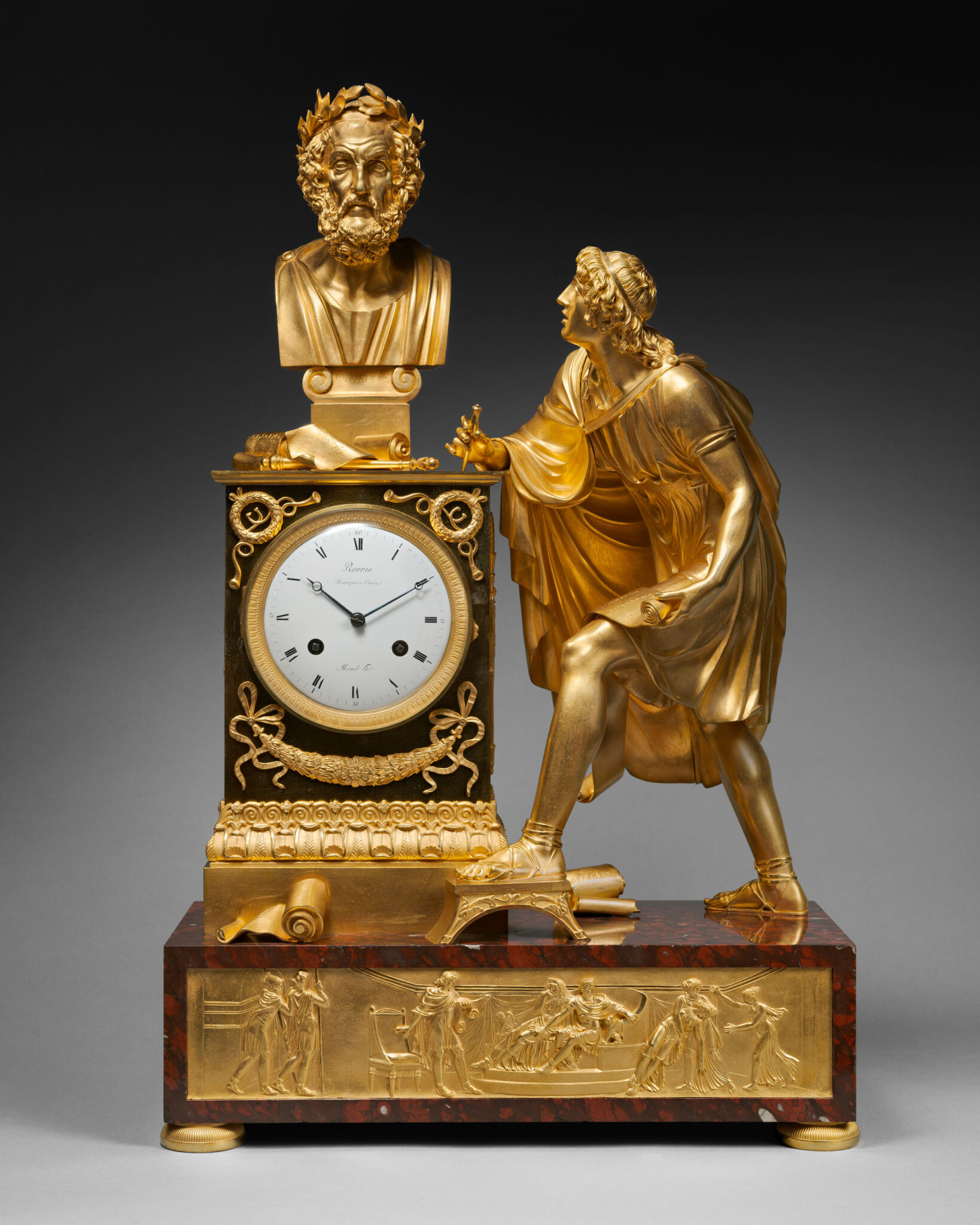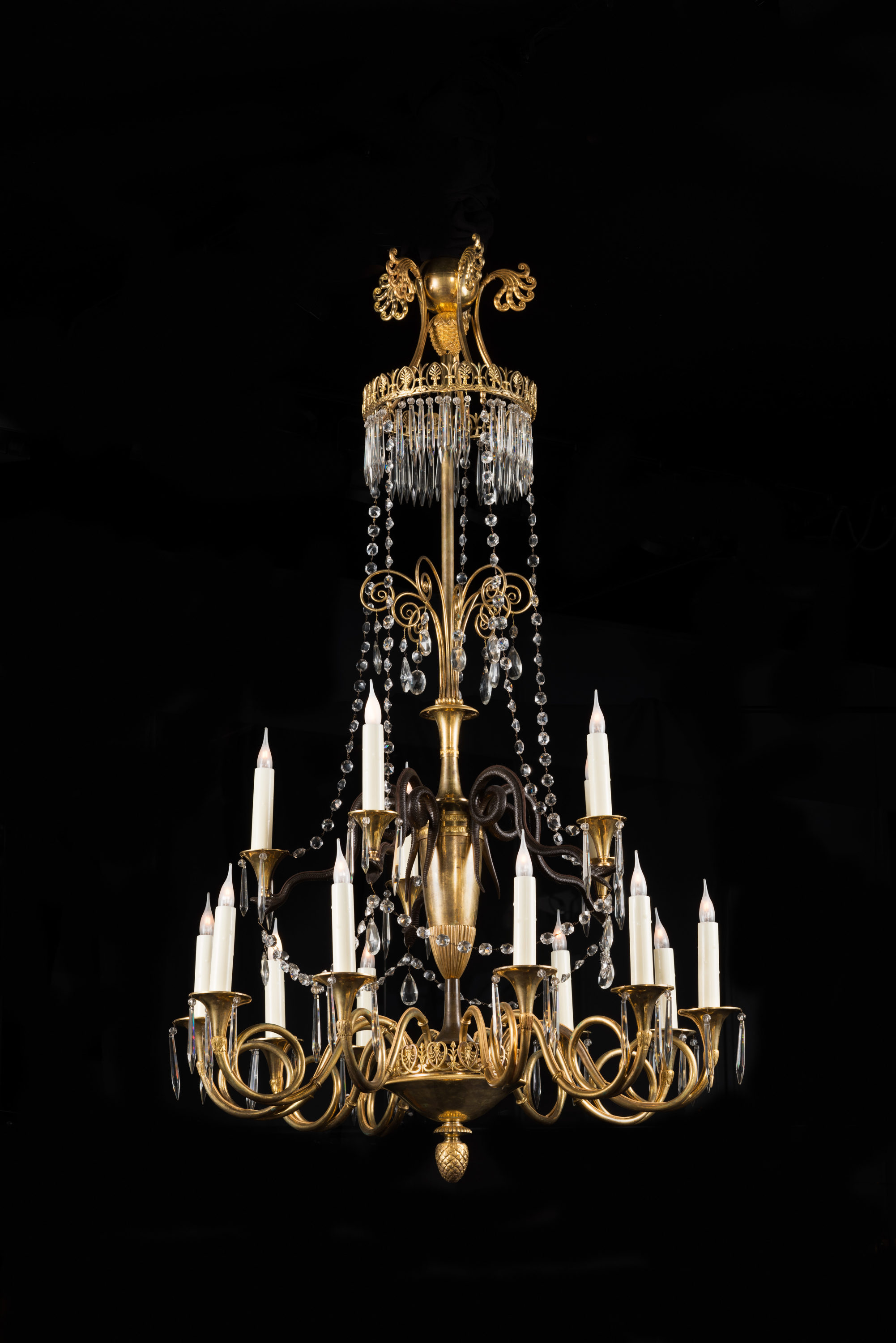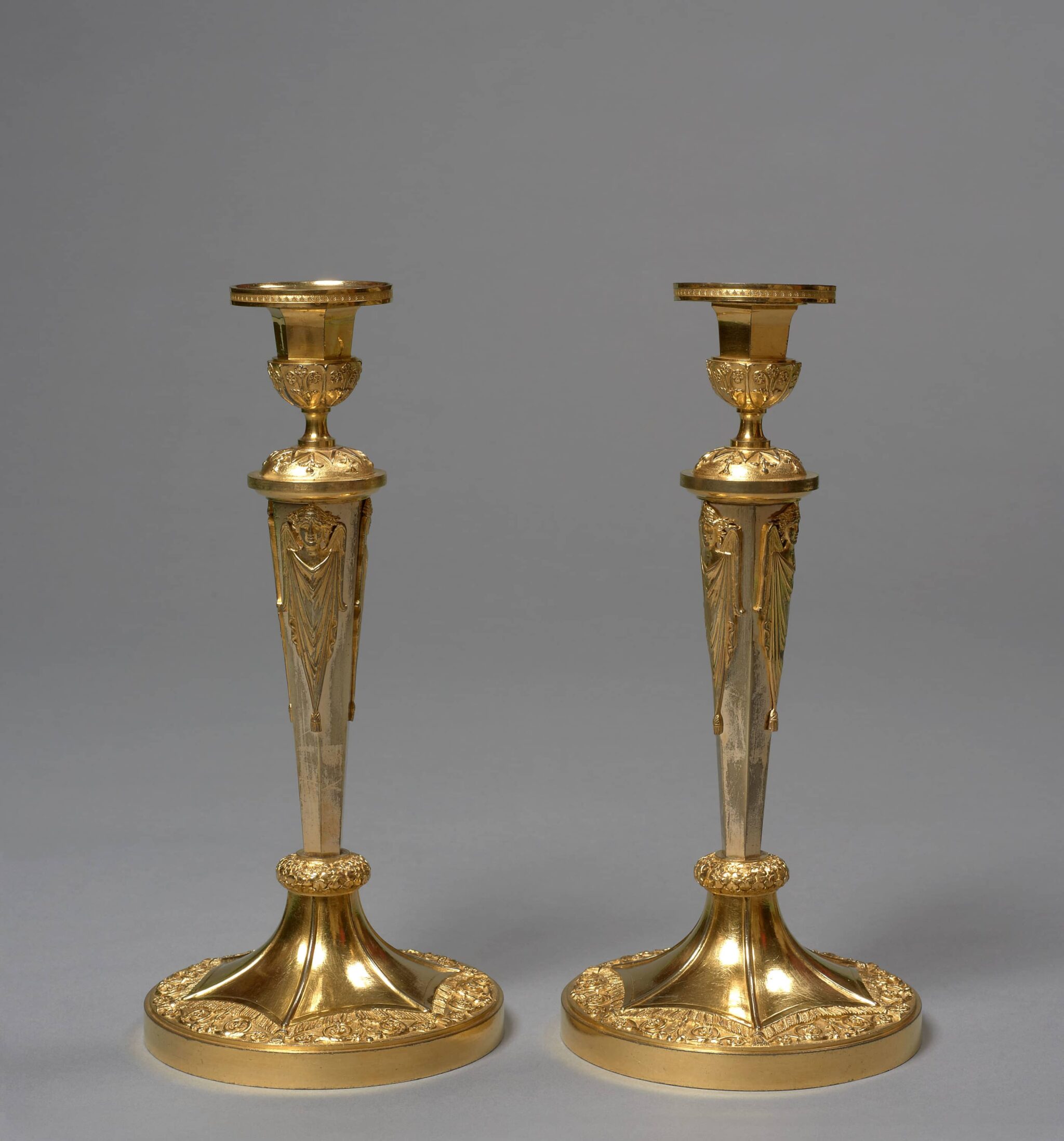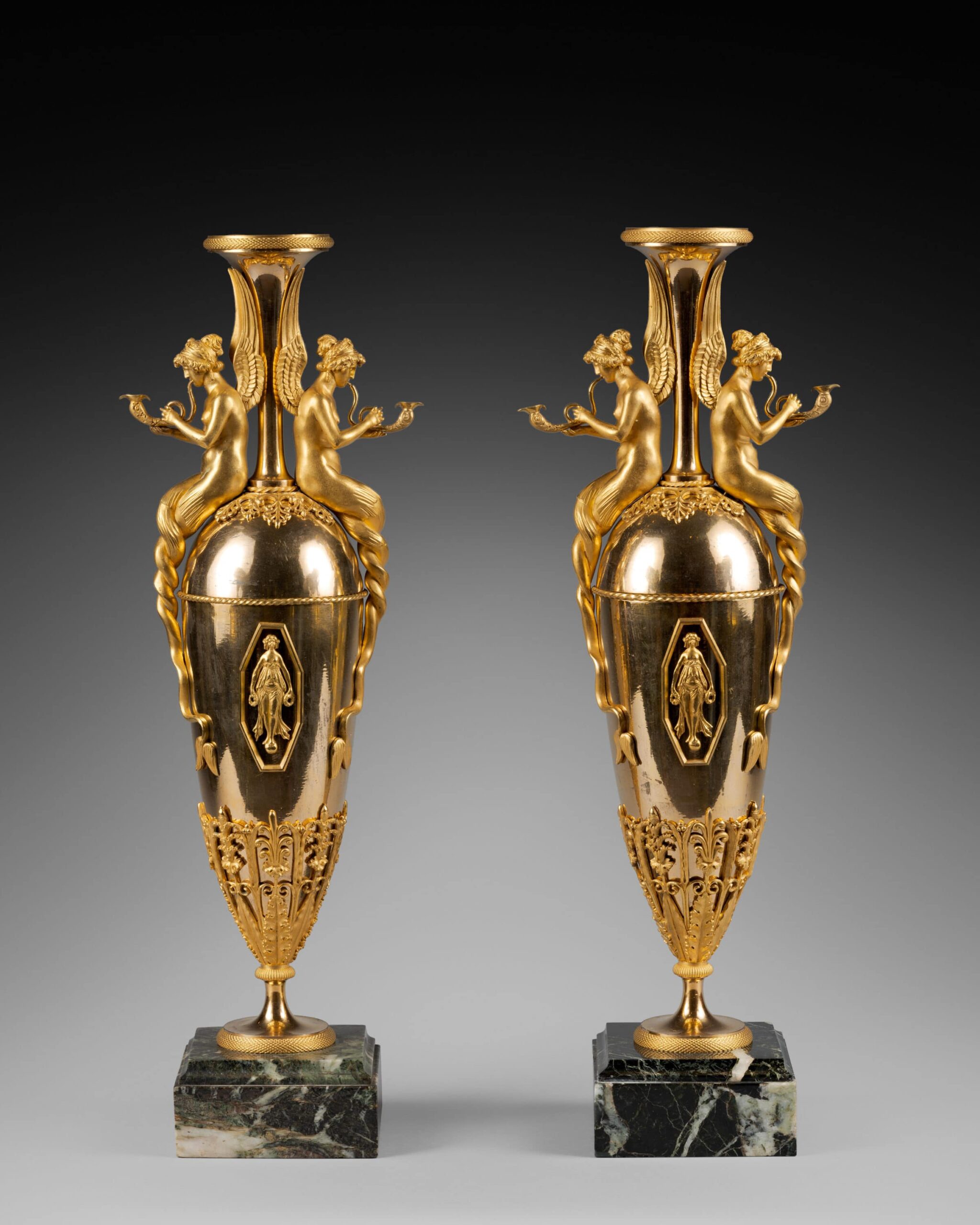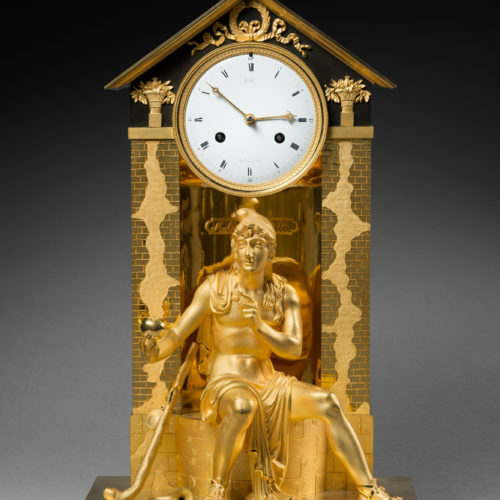Rare Patinated and Gilt Bronze Mantel Clock with Matte and Burnished Finishing
“The Judgment of Paris”
The round white enamel dial, signed “Galle/Rue Vivienne à Paris”, indicates the Roman numeral hours and the Arabic fifteen-minute intervals by means of two pierced gilt bronze hands. It is set in a gilt bronze architectural case that is finely chased, patinated, and gilt with matte and burnished finishing. The movement is housed in a case depicting the façade of a temple with a triangular pediment that is adorned with a ribbon-tied wreath centered by a star and two leaf-filled baskets that rest on entablatures. The sides, which simulate fissured brick pilasters, suggest the chaos caused by the Trojan War and the defeat of the city, framing a niche with a cartouche bearing the words “A la Plus Belle”. This refers to the golden apple that Paris gave to Aphrodite. The Trojan prince, who wears classical drapery, sandals, and a Phrygian cap, holds out the apple, seated on the rim of a well, with his cane beside him and his hunting horn at his feet. The clock rests on a quadrangular base that is raised on flattened ball feet.
Discover our entire collection of antique french empire mantel clocks for sale online or at the gallery.
La Pendulerie is the specialist in fine and rare antique clocks, based in Paris.
The elaborate design of the present clock, and the exceptional quality of its gilding and chasing, make it one of the finest existing Parisian clocks of the Empire period, with a mythological theme. The subject was based on Greek mythology: the Trojan prince Paris, the son of King Priam, is one of the most frequently treated literary themes in the history of French and the European decorative arts. Eris, the goddess of discord, was not invited to the wedding of Peleus and Thetis on Mount Olympus. In anger, she threw a golden apple, symbolizing absolute beauty, amongst the wedding guests. The goddesses Hera, Athena and Aphrodite fought over the apple. In order to choose between them, Zeus ordered Hermes to take the three goddesses to Mount Ida so that Paris could cast the deciding vote. The young prince awarded the apple to Aphrodite, who had promised him the love of Helen (who was then married to Menelaus). A war broke out between the Greeks and the Trojans, which ended with the fall of Troy, due to the cleverness of Ulysses, who constructed the famous Trojan horse. To the best of our knowledge, only one other identical clock is known. It is pictured in P. Kjellberg, Encyclopédie de la pendule française du Moyen Age au XXe siècle, Paris, 1997, p. 448.
Claude Galle (1759 - 1815)
One of the foremost bronziers and fondeur-ciseleurs of the late Louis XVI and Empire periods, Claude Galle was born at Villepreux near Versailles. He served his apprenticeship in Paris under the fondeur Pierre Foy, and in 1784 married Foy’s daughter. In 1786 he became a maitre-fondeur. After the death of his father-in-law in 1788, Galle took over his workshop, soon turning it into one the finest, and employing approximately 400 craftsmen. Galle moved to Quai de la Monnaie (later Quai de l’Unité), and then in 1805 to 60 Rue Vivienne.
The Garde-Meuble de la Couronne, under the direction of sculptor Jean Hauré from 1786-88, entrusted him with many commissions. Galle collaborated with many excellent artisans, including Pierre-Philippe Thomire, and furnished the majority of the furnishing bronzes for the Château de Fontainebleau during the Empire. He received many other Imperial commissions, among them light fittings, figural clock cases, and vases for the palaces of Saint-Cloud, the Trianons, the Tuileries, Compiègne, and Rambouillet. He supplied several Italian palaces, such as Monte Cavallo, Rome and Stupinigi near Turin.
In spite of his success, and due in part to his generous and lavish lifestyle, as well as to the failure of certain of his clients (such as the Prince Joseph Bonaparte) to pay what they owed, Galle often found himself in financial difficulty. Galle’s business was continued by his son after his death by his son, Gérard-Jean Galle (1788-1846). Today his work may be found in the world’s most important museums and collections, those mentioned above, as well as the Musée National du Château de Malmaison, the Musée Marmottan in Paris, the Museo de Reloges at Jerez de la Frontera, the Residenz in Munich, and the Victoria and Albert Museum in London.
Discover our entire collection of rare clocks on La Pendulerie Paris.
